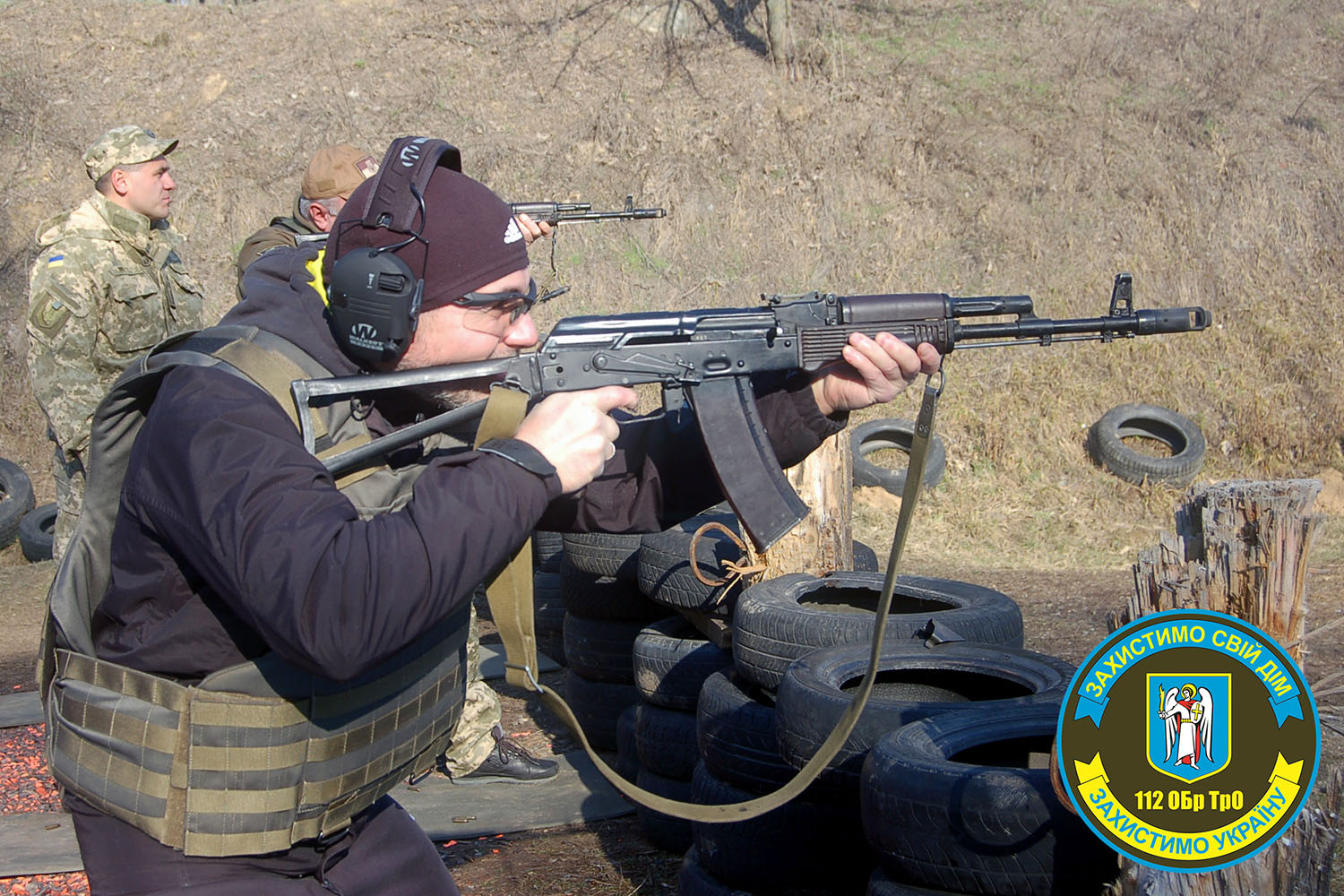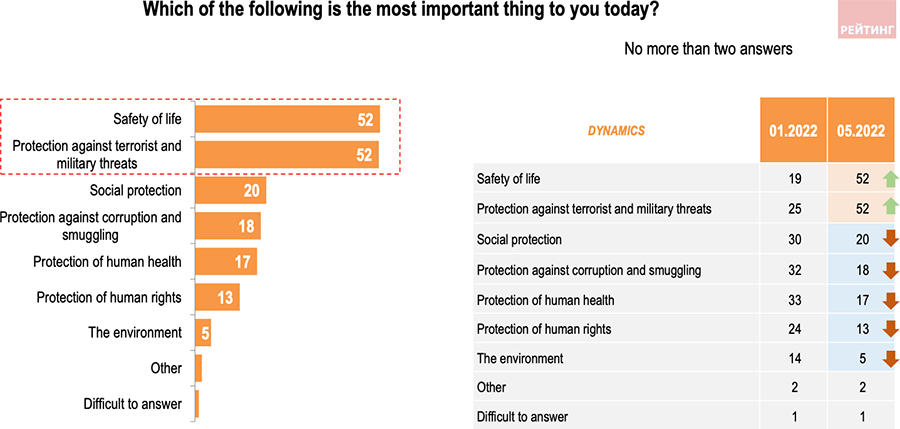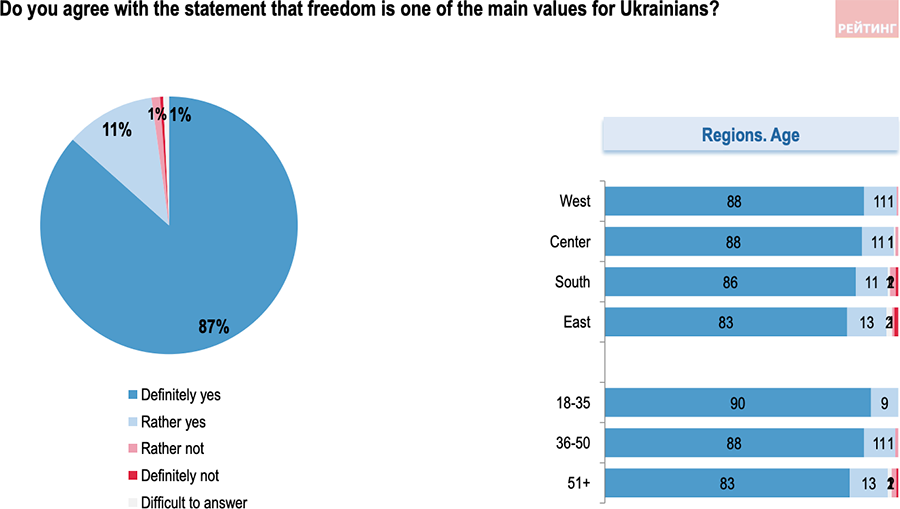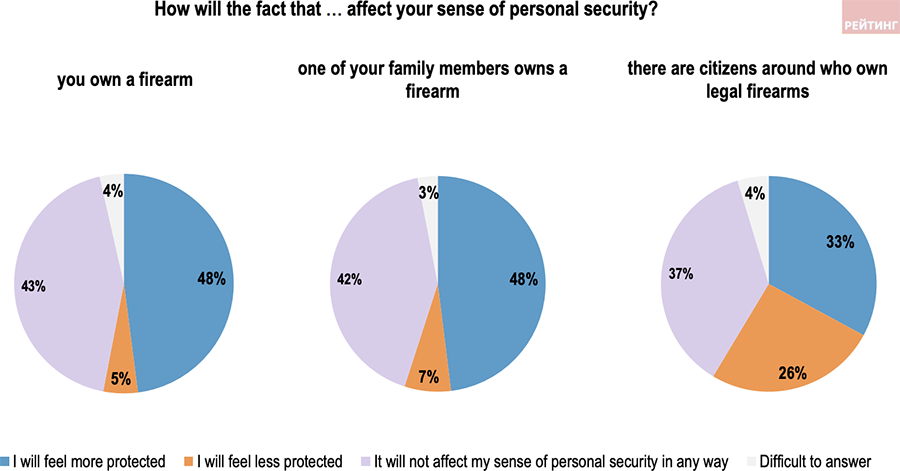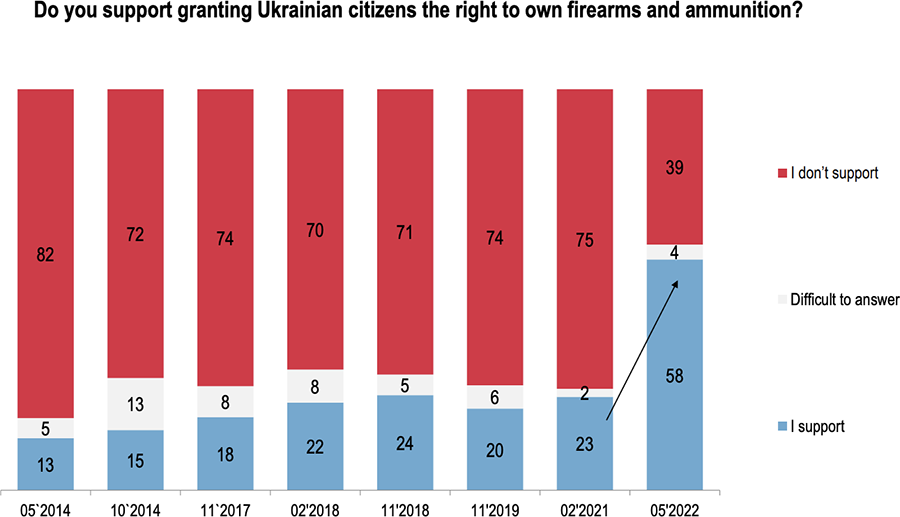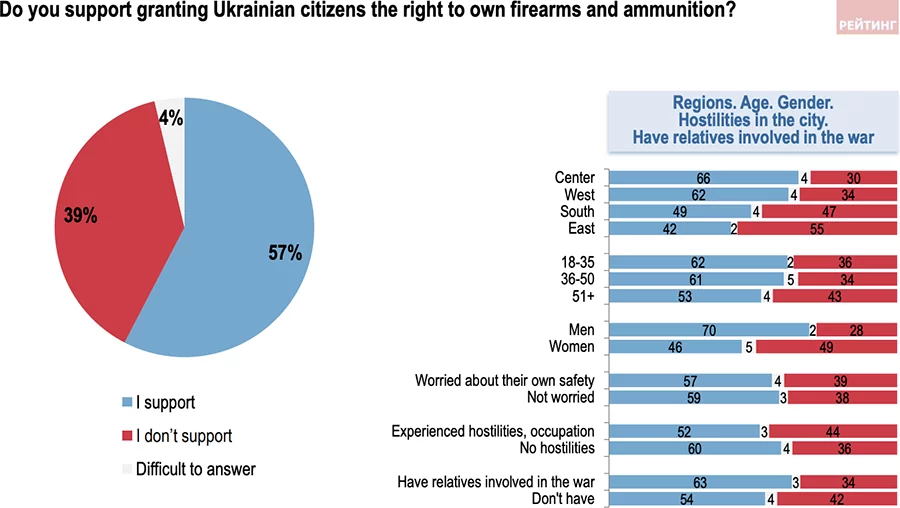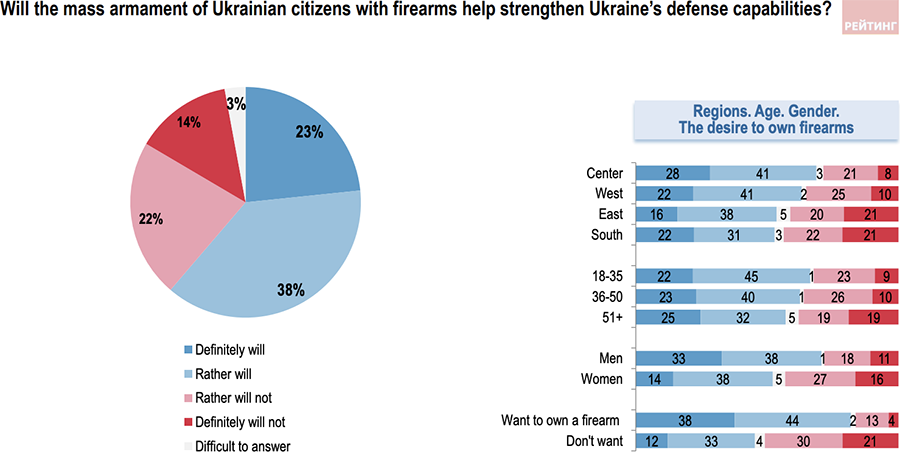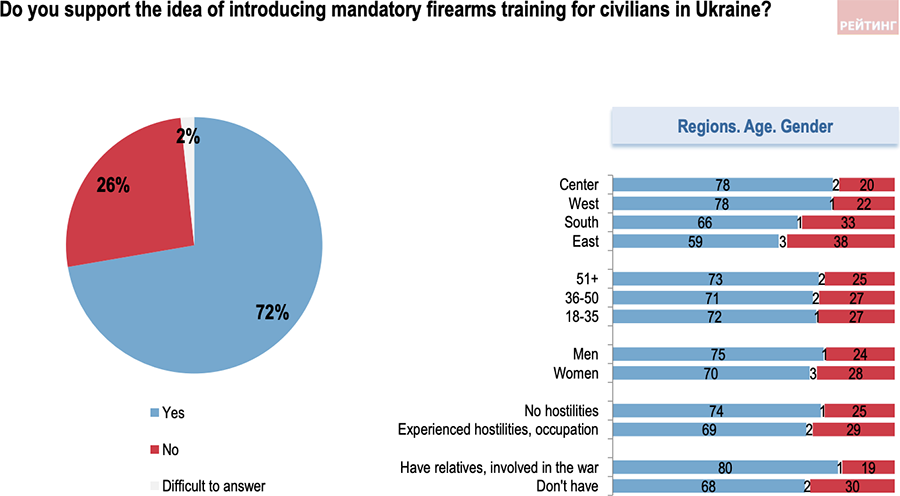as the most important things in their lives. Almost all Ukrainians believe that freedom is the main value, while the majority consider the right to protect their life the most important among constitutional freedoms.
In its 11th national poll conducted during the all-out Russia's war against Ukraine, the Sociological Group Rating, one of major Ukrainian pollsters, asked Ukrainians about their most valued freedoms and their opinion on the legalization of the firearms ownership for the Ukrainian citizens. Rating carried out this survey commissioned by the public initiative “Ukrainian Arsenal of Freedom” on 16 May.
- The survey conducted by the Sociological Group “Rating” in May 2022 and commissioned by the public initiative “Ukrainian Arsenal of Freedom” showed a significant difference in the assessments of the situation in Ukraine and the one at the local level. Speaking about Ukraine, 73% of the respondents said that the situation in the country is tense, 22% said it was critical, and only 4% said it was calm. On the other hand, when assessing the situation at the local level, 61% consider it calm, 34%, tense, and only 4%, critical. The residents of the East and South of Ukraine see the situation as more tense than the respondents from the Center and especially those from the West.
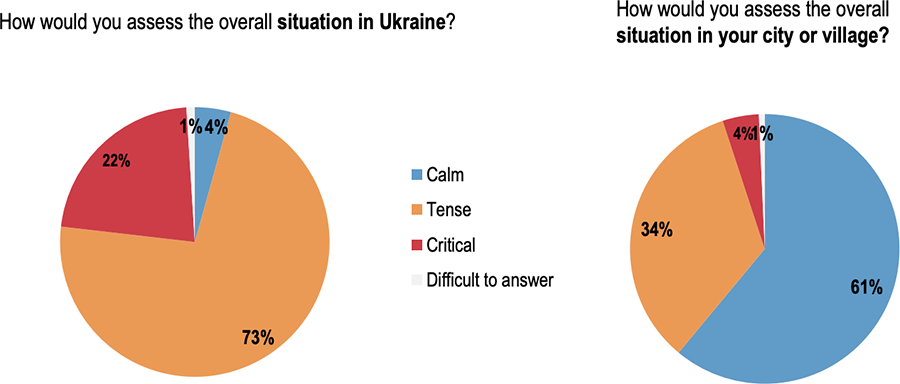
- The importance of the safety of life (52%) and the protection against terrorist and military threats (52%) has increased significantly for the respondents over the past four months – these two factors top the ranking of important components in the field of personal security. Social protection is important in this context for 20% of respondents, while protection against corruption and smuggling, for 18%, protection of health, for 17%, human rights protection, for 13%, and the environment, only for 5%.
- The right to protect their life is the most important right for the respondents today (58%) among the key rights guaranteed by the Constitution of Ukraine. Freedom of speech is the most important right for 32%, the right to personal integrity, for 30%, the right to work, for 27%, the right to social protection, for 25%, and the right to property, for 21%. The freedom of movement is the most important right for 14%, judicial protection, for 13%, education, for 11%, safe environment, for 8%, freedom of religion, for 7%, and the right to entrepreneurship, for 6%.
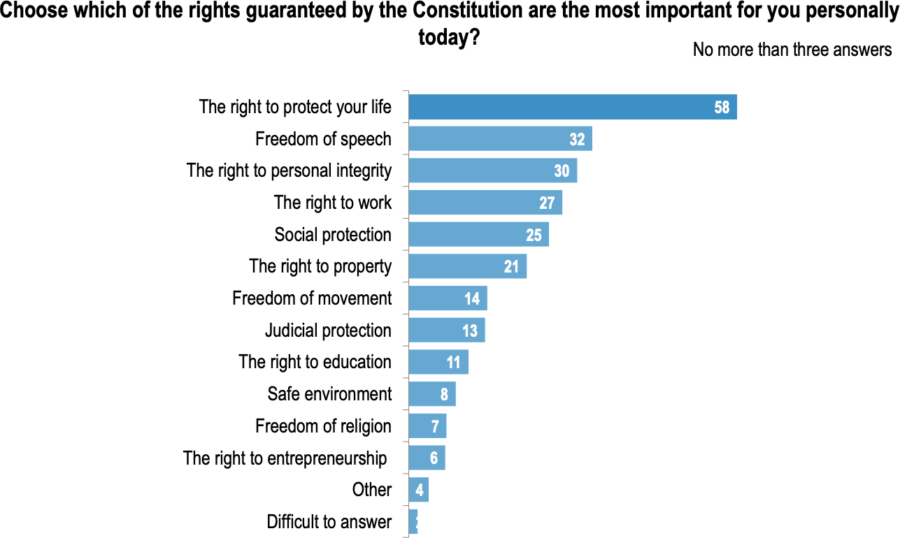
- Over 90% of the respondents agree that freedom is one of the main values for Ukrainians.
- Half of the respondents believe they are able to defend themselves in the event of a sudden threat to life, health or property before the arrival of the police. The other half don’t think so. Men, young respondents and those who are can use firearms perfectly consider themselves more able to defend themselves.
- The respondents are more concerned about the safety of their relatives and friends (91%) than about their own safety (63%). Women, the residents of the South and the East, as well as the respondents from the places where hostilities or occupation took place are more concerned about their personal safety.
- A personal ownership of a firearm or the ownership of a firearm by a family member provides a greater sense of security (48%) than the fact that there are other people around who own legal firearms (33%)
- During the war, the share of those who support granting Ukrainian citizens the right to own firearms and ammunition has more than doubled.
Today, 58% support such an initiative, while 39% do not. Thus, for the first time in the history of the studies of this issue in Ukraine, the share of the supporters of this idea exceeded the number of its opponents (in 2018-2021, about a quarter supported this idea, while more than 70% did not support it). There are more supporters of the “armament” of the citizens among the residents of the Center of the country, the respondents in young and middle age groups, and among men.
- The respondents who have relatives who are currently defending Ukraine in the war are more supportive of the idea of granting citizens the right to bear arms than other respondents.
- 61% believe that mass armament of Ukrainian citizens with firearms will help strengthen the country's defense capabilities. 36% are of the opposite opinion. Young people, men and those who want to have weapons agree with this statement more.
- 45% believe that establishing a legal framework for the free purchase of firearms will increase the personal freedoms of citizens, while 40%, on the contrary, believe that freedoms will be infringed under such conditions. There are more latter respondents among the residents of the East of Ukraine, among women and among the opponents of creating conditions for the free purchase of firearms.
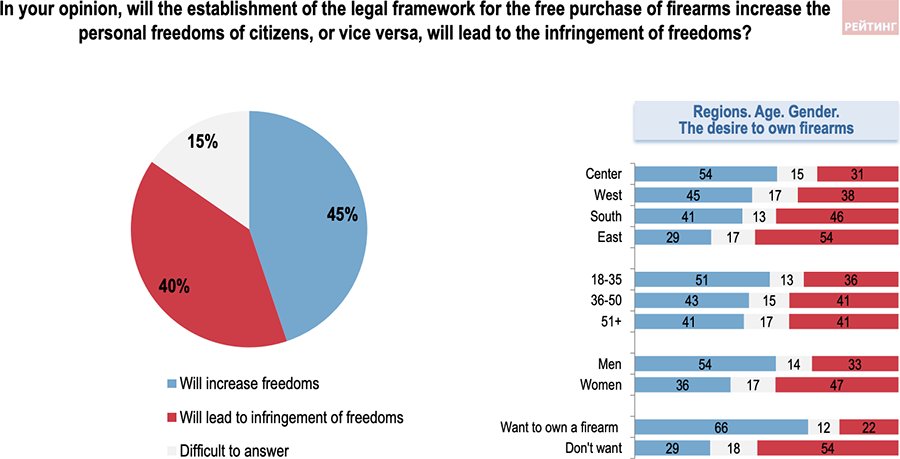
- At the same time, 58% fear that the free purchase of firearms will increase crime. The opposite opinion was expressed by 35% of the respondents. There are more latter respondents among the residents of the Center of Ukraine, among men and among those who want to become owners of firearms.
- About 80% of respondents did not feel the need to own a firearm before the Russian invasion. Instead, today 44% would like to own firearms and ammunition. Therefore, today, a third of those who did not want to have weapons before the war changed their minds, and almost half of them want family members to have weapons.
- Now, 60% of men and 28% of women would like to own firearms and ammunition. At the same time, while women are generally against owning firearms personally, most middle-aged and younger women want their family members to own weapons.
- Among those who want to have a firearm, the majority (70%) would like to have one firearm. 21%, would like to own two pieces, while 9%, three or more. Among the firearms, they prefer guns (57%) and slightly less, automatic rifles (48%). 18% would like to have a shotgun (rifle).
- Almost 60% of men and 30% of women would use the right to purchase firearms and ammunition if they had the financial and legal capacity to do so.
- At the same time, 64% believe that there is a significant threat of illicit arms trafficking after the war is over. 31% believe that although such a threat exists, it is insignificant. 3% do not see this threat at all.
- 17% of the respondents (including 31% of men and 4% of women) said that they can use firearms perfectly. 38% have general skills. 45% said they did not have such skills. Among those who know how to use firearms only in general, two-thirds would like to improve their skills. Among those who cannot use firearms at all, 37%. Interestingly, more than half of young and middle-aged women would like to learn to use a firearm.
- The majority of respondents (72%) support the idea of introducing mandatory firearms training for civilians in Ukraine. 26% do not support it.
The poll's audience was the population of Ukraine aged 18 and older in all oblasts, except for the temporarily occupied territories of the Crimea and the Donbas. The sample is representative by age, sex and type of settlement. The sample population was
1,000 respondents. The survey method used was CATI (Computer Assisted Telephone Interviews). The error of representativeness of the study with the confidence level of 0.95 is not more than 3.5%.
Read also:
- Ukrainians hate Stalin, see the Russian aggression as a genocide: opinion poll
- Not enough weapons, not enough Russian sanctions: opinion poll
- Support for Ukraine’s EU accession hits historic high of 91% amid Russian invasion - poll
- 71% of Russians feel “pride, joy, respect, hope” regarding war against Ukraine - poll
- Russians increasingly casual in talking about use of nuclear weapons

